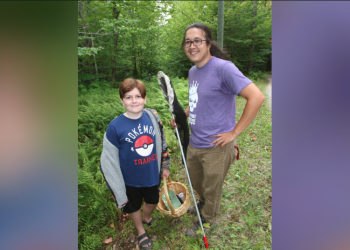Combining new scientific methodologies with decades of citizen-derived avian science, authors Matt Betts and colleagues have proof that forest degradation in “managed” forest landscapes is the major cause behind the demise of avian habitats and bird populations in the Maritimes.
Biologists in this region (with the exception of industry clones) will read this paper with a growing sense of gratitude and relief. So too will folks involved in data collection for the Atlas of Breeding Birds of the Maritimes Provinces, published in 1992 and 2015, which documented population declines.
An estimated 33 to 104 million birds were lost in the Maritimes during the 35-year period from 1985 to 2020, due to habitat degradation by a forest “management” regime that’s amounts to callous, profit-driven mismanagement.
In a real sense, Betts and his colleagues are providing scientific proof for what nature lovers have been sensing and seeing for decades. Older folks who observe and respect nature have witnessed this healthy forest/habitat loss over lifetimes. The reality has been steadfastly disputed by forest industry propaganda that sidesteps the issue, focussing instead on employment, tree planting, etc.
The total area of forest cover in the Maritimes hasn’t changed much, but the nature of that forest has been drastically altered by landscape-scale clear-cutting, herbicide use, and forest replacement with plantations or the regeneration of mostly pioneer species.
The authors found that rapidly-dwindling rates of loss of older, mature forest habitats are closely matched by similar declines of bird species populations that use those forest habitats. Mature forest losses are highlighted as the dominant cause of mortality.
The statistics presented here are mind-boggling. For all its science, this article has been written in an easy-to-understand manner. I encourage everyone to download and read it carefully.
Beyond birds, I believe this paper pinpoints the cause for declines of many other species. Mammals, amphibians, reptiles, cold-water fish, insects, mosses, lichens, fungi and many plant species live here year-round. Many depend on mature, diverse forests to provide the habitat elements they require. Those needs include food, shelter, den sites, vernal pools, shade for ground cover plants and cool, moderated water flows into streams for salmon and trout.
Refugees who lose viable forest habitats and relocate to another suitable habitat will likely find it already occupied by their species. Overcrowding occurs and fights erupt. Then displaced species take up residence in habitats that are far less than ideal, where any chance of successful breeding is unlikely.
When the industry finds martens in plantations, this speaks not to the animal’s ability to adapt, but to their displacement and probable imminent demise. Plantations may have squirrels, but lack den sites.
Habitat demise can be traced back to governments with ecologically-unfriendly silos of departmental responsibility. Species like Atlantic salmon are jurisdictionally insulated from forestry activities that turn watersheds into overheated wastelands. Employees can only operate within their department’s jurisdiction. The collective will and means to deal effectively with serious ecological issues are rarely mustered.
It’s apparent that heads of provincial governments and forest industries value “woodpiles at roadside” far ahead of the long-term health of eastern forests and wildlife habitats. Short-term thinking will be the earth’s undoing. Mark Carney, the former Governor of the Bank of Canada, said it succinctly: we are “trading the planet for profit.”
It’s also clear to me that New Brunswick and Nova Scotia provincial government so-called policy makers, by allowing this industrial habitat degradation and wildlife attrition on public (Crown) lands and private lands to take place for more than 35 years, have been lounging in the back seats of a forestry bus that’s driven by the industry, with no government or public hands allowed on the steering wheel. Foxes have been paid by taxpayers to control the chicken coop.
Eradicated by large clearcuts and plantations, many forest sites no longer have appropriate local seed sources nearby to naturally reverse this trend.
If citizens want healthy forests and robust wildlife populations, the time has come for drastic change. We’d better start now.
With eastern forest landscapes and wildlife populations deteriorating rapidly, the path to recovery will be long and costly.
Bob Bancroft is a wildlife biologist and the current president of Nature Nova Scotia.


![Forest for the trees [audio]](https://nbmediacoop.org/wp-content/uploads/2023/05/Roger-Babin-clearcut-scaled-1-350x250.jpeg)




![Is pollution from industry causing the neurological disease ALS in New Brunswick? [video]](https://nbmediacoop.org/wp-content/uploads/2025/10/Quintin-Soloviev-Belledune_Generating_Station_in_New_Brunswick_Canada-120x86.jpg)


